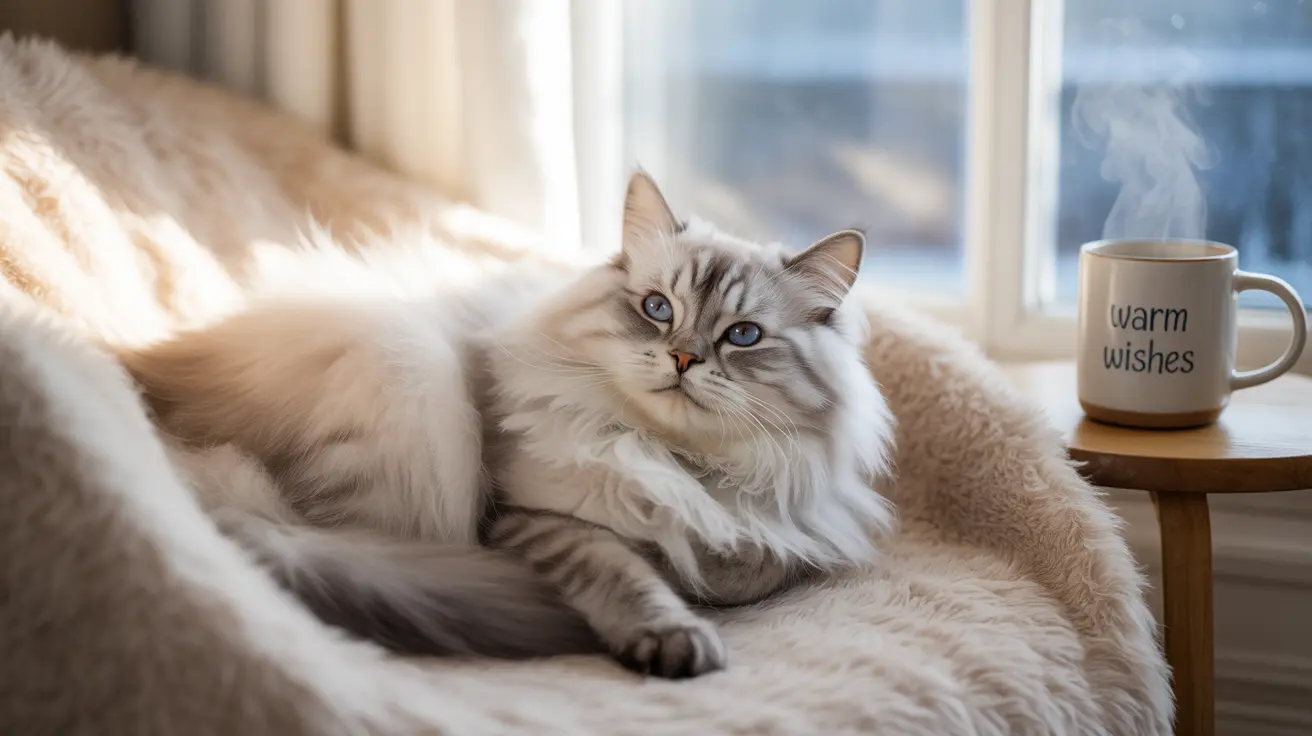Understanding Your Cat's Temperature Needs
Cats naturally maintain a body temperature between 99°F and 102.5°F (37.2°C to 39.2°C). Despite their furry coats, they actually prefer environments warmer than most humans find comfortable, typically between 86°F and 100°F (30°C to 38°C).
This preference for warmth stems from their desert-dwelling ancestors, making them particularly sensitive to cold temperatures.
Critical Temperature Thresholds for Cats
The general rule is that temperatures below 45°F (7°C) become dangerous for most healthy adult cats. However, several factors influence a cat's cold tolerance:
- Healthy adult cats with thick fur: Can typically handle temperatures down to 45°F
- Senior cats, kittens, or those with health issues: Should not be exposed to temperatures below 60°F
- All cats: Risk of hypothermia and frostbite below 32°F
Identifying Cold Stress in Cats
Watch for these warning signs that your cat is too cold:
- Excessive shivering or trembling
- Seeking unusual hiding spots
- Curling into a tight ball
- Lethargy or decreased activity
- Cold ears, paws, or tail
- Hunched posture
Special Considerations for Different Cats
Indoor vs. Outdoor Cats
Indoor cats are generally less cold-tolerant than their outdoor counterparts, who develop thicker winter coats. However, even outdoor cats need proper shelter when temperatures drop below 45°F.
Age and Health Factors
Certain cats need extra protection from cold:
- Kittens and senior cats
- Cats with chronic illnesses
- Those with arthritis or joint problems
- Cats recovering from surgery or illness
Protecting Your Cat During Cold Weather
Take these steps to keep your cat safe and comfortable:
- Provide warm, draft-free sleeping areas
- Use pet-safe heating pads or thermal blankets
- Keep indoor temperatures above 60°F
- Create or provide insulated outdoor shelters if needed
- Limit outdoor time during extreme cold
Frequently Asked Questions
How cold is too cold for cats to be outside safely?
Temperatures below 45°F (7°C) are generally too cold for cats to be outside safely for extended periods. For vulnerable cats (elderly, sick, or very young), the threshold is higher at around 60°F (15.5°C).
What signs indicate my cat is suffering from cold stress or hypothermia?
Signs include shivering, lethargy, cold extremities, decreased activity, seeking unusual warm spots, and hunched posture. Severe hypothermia can cause confusion, shallow breathing, and require immediate veterinary care.
How can I keep my elderly or sick cat warm during cold weather?
Provide heated beds or pads designed for pets, maintain steady indoor temperatures above 60°F, offer multiple warm sleeping spots, and keep them away from drafts. Consider extra blankets and raised beds to keep them off cold floors.
Are certain cat breeds more tolerant of cold temperatures than others?
Yes, breeds with thick, long fur like Maine Coons, Norwegian Forest Cats, and Siberian cats have better cold tolerance. However, all cats need protection from extreme cold regardless of breed.
What are the risks of frostbite in cats and how should it be treated?
Frostbite commonly affects ears, tail, and paw pads when exposed to freezing temperatures. If you suspect frostbite, warm the affected areas gradually with warm (not hot) towels and seek immediate veterinary care. Never rub frostbitten areas as this can cause more damage.
Remember, when in doubt about your cat's exposure to cold temperatures, err on the side of caution. It's always better to provide too much warmth than risk your cat's health and safety during cold weather.






